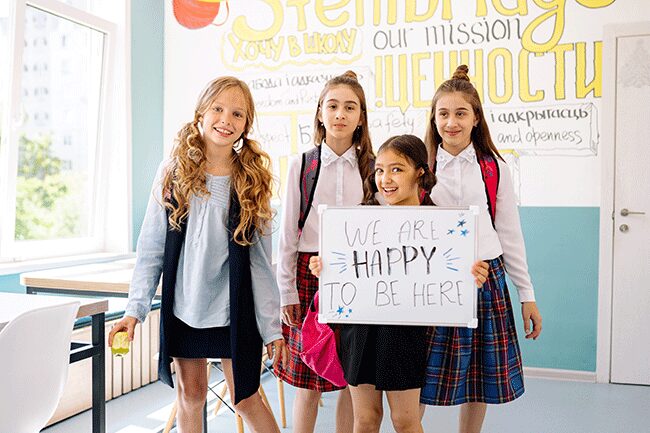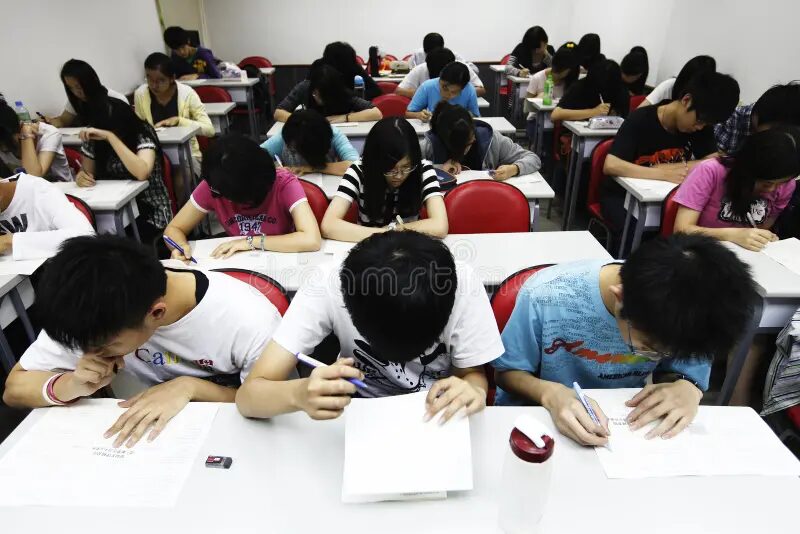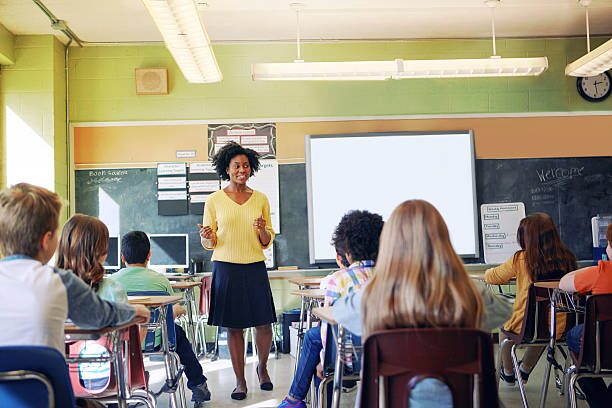Introduction – Junior High School Education
Junior high school. Those three words inspire a range of emotions, from excitement to dread, for students, parents and educators alike. This is a time period of transition, growth and discovery leaving childhood behind and entering into the exciting yet occasionally scary stage of adolescent life. Junior high, typically covering grades 7-8 or 7-9, serves as a transitional phase between elementary school and high school, helping to establish the groundwork for academic achievement, personal growth, and future goals.
This complete guide uncovers the ins and outs of junior high school, including details on the classroom curriculum and social-emotional development, as well as how to succeed in the transition and more. So whether you are a student who is about to take on this endeavor, a parent who wants to support Children, or a teacher who wants to promote healthy communication between student and teacher, you will learn a lot about how to go about junior high school education.

What is Junior High School Education?
Grades 6, 7, and 8: Junior High School/middle school depending on the district/area (extra/in-between grades may be included if a district puts 6-9 grades in junior high). It is a separate level of education that meets the specific developmental requirements of the early adolescent age group.
The structure of junior high was established in the early 20th century and was intended to cater to the development needs of educational “transitional” students between elementary school and high school. That meant, educators understood, a different approach to the learning environment, one that reflected their body, mind and social-emotional needs of young people as they matured. This led to the development of junior high schools in hopes that this more specialized curriculum would better complement this important growth stage.
Though “junior high” and “middle school” are frequently interchangeable, there are slight differences. Junior high schools focus more on academic preparation for high school and take a more departmentalized approach, with stronger core subjects. In contrast, middle schools tend to take a more integrated model, with exploratory, interdisciplinary project-based learning, and greater emphasis on social-emotional development.
Help them all to have fulfilling & healthy lives, with a challenging education that prepares them for high school, no matter what label you put on it. It is a period for students to pursue their interests, learn crucial skills, and lay a strong base for future endeavors.
The Curriculum in Junior High School
The Junior high school curriculum adds to the foundation laid in elementary school and prepares students for high school. It usually includes a mix of core classes and electives to address different learning styles and interests.
Core Subjects
Junior high school education is characterized by a strong emphasis on core subjects, which serve as the foundation for students’ academic development. These topics usually consist of:
- Math: Junior high math picks up where elementary arithmetic left off, with pre-algebra, algebra I, and in some cases geometry. Through this process, students learn how to think critically and solve problems as they study variables, equations and functions.
- English Language Arts: Focus on reading comprehension, writing ability, and communication skills. Students work with increasingly complex texts, learn to analyze literature, and work on writing skills in multiple genres, such as essays, research papers and creative writing.
- Science: Junior high science promotes curiosity and explores life science, earth science and physical science. They conduct experiments, analyze data, and gain a richer understanding of the world around them.
- Social Studies: History, geography, civics and economics all enrich students’ understanding of the world. They delve into diverse cultures, historical events, and societal frameworks, honing their critical thoughts and gaining insight into their responsibilities as members of society.
Elective Courses
Electives allow students to explore areas of interests and to specialize further in areas of study. These vary considerably by school and district, but common electives in junior high school include:
- Foreign Languages: Learning a new language can immerse you in a new culture and improve cognitive abilities. Some of the most common choices are Spanish, French, and Mandarin Chinese.
- Art and Foreign Language Visual arts, performing arts, or a combination of both can foster creativity in students as well as artistic skills. Common offerings include painting, drawing, sculpture, music, drama, and dance.
- Band, choir, orchestra and general music classes expose students to different kinds of music, teach students how to play different instruments, develop their musical talents.
- Technology: Computer science, coding, digital media, and other technology-focused courses provide students with skills that are critical in the 21st-century workplace.
They offer pathways but also help students develop in other ways. They allow children to explore creativity, problem-solving skills, teamwork, and a feeling of achievement.
Junior high school curriculum typically incorporates a variety of core subjects alongside electives, striking a balance between foundational knowledge and personal interests as it prepares students for the challenges and opportunities ahead.
Social-Emotional Development in Junior High
Junior high is a critically, socially-emotionally developmental stage with intertwined webs of identity, social relationships, and hormones. Therefore, a brief introduction to the importance of the usage of data seems appropriate.
Identity Formation
Early adolescence is a time of identity formation and exploration, where it is common for students to ask themselves “Who am I?” and “Where do I fit in?” They start to form a clearer identity, delving into their values, beliefs, and interests. The ongoing formation of identity for teens is critical to their social-emotional development and what they choose to do, who they choose to spend time with, and what they see for their future.
Physical changes at puberty can play a part in self-consciousness and uncertainty, too. Changes in mood, increased emotionality, and heightened sensitivity to social pressures. Students at this stage are becoming more self-reliant and independent thus parents and teachers alike need to be more understanding and supportive in these transitions and stimulate open disrespect and guidance as per the situation allows.
How to Support Identity Formation:
- Allow self-expression: Give students the time to explore their interests outside of academics including hobbies and creative activities.
- Encourage open dialogue: Allow students to speak freely as it relates to their opinions and personal feelings without criticism.
- Build Self-Esteem — Encourage students to focus on their strengths and achievements, so that they have a positive self-image.
- USE SAINTS: Give guidance voice in your student’s life and help every challenge turn into opportunities.
Peer Relationships
While peer relationships are always important, they often become heightened in junior high, as students find acceptance, belonging and connection with one another. Friendships are so complicated, and social dynamics are hard to manage.
Good peer relationships can lead to positive student experiences and a strong sense of belonging, support and validation. But seeking acceptance can also very well fuel peer pressure; the need to fit in with others can cause students to compromise their own morals and values to fit within a given group.
The social hierarchies of junior high, full of friendships, cliques, and social conflicts to navigate, can be a stressful and anxiety-inducing part of life for many students. They need to learn how to navigate their social world, and that’s well within the purview of parents and educators to teach them how to forge healthy relationships, know when they are being negatively pressured and how to respond to conflicts constructively.”
Guidelines for Managing Peer Relationships:
- Foster healthy relationships: Talk about what healthy relationships look like and encourage students to pursue friends who positively impact their health.
- Teach conflict resolution skills: Teach your students how to communicate with each other effectively, resolve their differences peacefully and ask for help when necessary.
- Create a school climate that tells students that they do not have to be bullied or excluded, and give them the tools and support to deal with it if they have to.
- Develop strong connections: Arrange activities and events that foster social engagement and allow students to meet peers.
Junior high represents a key transition period for students, fraught with challenges and opportunities for growth, and with supportive educators, parents and tools for navigating identity formation and peer relationships, junior high students can emerge from their crucial educational years with resilience and confidence.

Preparing for High School and Beyond
Junior high school is not only about getting by in the now; there is also finding the foundation built for a future. The experiences and skills students collectively acquire during their most formative years are essential components to their academic preparedness leading into high school and understanding of potential career pathways.
Academic Preparation
Junior high is an important transition to high school, which has much higher academic expectations. Mastering strong study habits, time management skills and organizational strategies in junior high sets students up for success faced with the rigors of high school course material.
Verbs for academic front end preparation:
- Study Skills: Effective note taking, active reading, test-taking strategies, and research skills are essential for academic success.
- Time Management- Prioritizing, time management, and balancing academics with extracurriculars and personal life go hand in hand.
- Organizational Prowess: By honing systems for organizing notes, assignments and study materials, students can stay on track and alleviate stress.
Advice for the Academic Skills Builder:
- Create a study space: Studying in a quiet and organized spot without distractions can help with focus and concentration.
- Chunk large assignments: Guide students on how to break assignments down into smaller, more manageable sections so as not to feel overwhelmed.
- One insight may be based on interactive learning: Students can aid themselves toward the subject matter by questioning what they see, summarizing it, or teaching it to someone else.
- Ask for help: Help students ask their teachers, tutors and classmates for help if they’re struggling with a concept or assignment.
Exploring Future Pathways
Once students hit junior high, it’s a great opportunity for them to explore what their interests are, and what potential career paths they may want to take. [T]hey like to expose themselves to different subjects, electives, overtime harmony, passions other titles look, get soViscaOn sheet medals.
Guidance counselors have a major impact when it comes to helping students reach for where they want to go and come up with a plan for the future. They can help with information about a variety of careers, aptitude tests, course selection and general college planning.
Students can explore various career paths and the qualifications or skills required by utilizing career exploration resources such as websites with databases of different careers, job shadowing opportunities, and conducting informational interviews with professionals in the field.
How to Explore Potential Future Pathways:
- Foster curiosity: Create conditions for students to follow their interests in various subjects and activities, including those that lay outside their comfort zone.
- Supplement learning with opportunities to meet professionals in fields students find interesting.
- Employ career exploration tools: Share online resources and opportunities, such as career fairs and mentorship programs.
- Talk with students about their future goals: Start talking with students about their goals (the short- and long-term plans) and encourage them to develop a plan to get there.
Through academic preparation and career exploration, junior high schools can set students up for success and empower them to make informed decisions about their future.
Tips for Parents and Educators
Junior high is a challenging yet rewarding time in both students’ lives and the lives of the adults who help them. How Parents and Educators Can Support a Positive Junior High Experience Here are a few suggestions to help you merge through this journey:
How it Helps in Academic Success
For Parents:
- Foster a conducive learning atmosphere at home: Create a quiet study area, reduce distractions and maintain a consistent homework schedule.
- Be active in your child’s education: Talk to teachers, participate in school events and keep track of your child’s academic performance.
- Have a growth mindset: Teach your kids that with hard work and determination they can learn and get better!
- Foster a love of learning: Support reading, exploration, and curiosity at home, outside of class.
- Set realistic expectations for your child: While you may want the best for your child, avoid applying too much pressure and be sure to acknowledge their work and accomplishments.
For Educators:
- Make learning fun, interactive and immersive: Leverage different modes of teaching, bring in technology and real life practice.
- Differentiate instruction: Address individual learning styles and tailor support for students who require additional assistance or challenge.
- This can be done by: Providing regular feedback: Circling back after assignments and assessments and providing constructive feedback helps identify areas that need to be improved.
- Nurture a positive classroom atmosphere: Set a welcoming and inclusive space where students feel comfortable taking risks and learning from failure.
- Engage with parents: Reflect on results with parents along the way to understand their concerns as you navigate your curriculum.
Social-Emotional Development Support
For Parents:
- Discuss social and emotional matters openly: Let your child know that their feelings are both normal and acceptable by providing a safe space to freely discuss them.
- Encourages proper behavior: Help your child to have a check on their behavior and give them a few simple things they can do to have a better life.
- Keep an eye on social media use: Know what your child is doing online and talk about social media responsibly.
- Models healthy behaviors: Encourage good sleep habits, plenty of activity, nutrition — appropriate amounts of sleep and exercise and smart eating all help mental and physical fitness.
- Get support if needed: Don’t be afraid to engage a counselor or therapist if your child is struggling with serious social or emotional issues.
For Educators:
- Establish a positive and inclusive school culture: Encourage respect, empathy, and kindness among students.
- Counter bullying and social isolation: Establish anti-bullying initiatives and assist students who are victims of bullying or social marginalization.
- Infuse social-emotional learning into the school day: Teach skills like self-awareness, emotional regulation, and conflict resolution.
- Facilitate access to mental health resources: Make sure that students have access to counselors, support groups, and other mental health services.
Engage parents in the process of supporting students’ social-emotional well-being
If everyone can put their input, parents and educators can work as a team to nurture junior high students academic, social and emotional success.

Conclusion
Data up until October 2023 You are It’s something of a bridge between the elementary years, when reading, writing and arithmetic are taught, and the more intense challenge of high school, and the academic must-dos for when you add on the social tumult of being a teenager.
In this guide, we have examined the multi-faceted world of junior high school education, including the curriculum, social-emotional development, how to succeed in junior high school, and the vital roles that parents and educators play. We have reiterated on the significance of developing a supportive and engaging learning environment in which students feel empowered to take risks, engage in challenges, and explore their passions.
In the context of the first day of junior high, students need to understand that junior high is not just a bridge to high school; junior high is an experience. This is a time when students can not only acquire critical tools, explore who they are and their place in the world, and cultivate significant connections but also set themselves up for future success.
With a bit of insight into the different aspects of junior high experience, and through collaboration as families, schools, and neighborhoods, we can help every student breeze through this monumental stage of life. So herews to junior high school education, supporting the next generation to become the best that they can be!
References:
- National Middle School Association (NMSA): https://www.nmsa.org/ – This organization is dedicated to supporting middle school education and provides resources for educators, parents, and students. You could find articles on best practices for teaching in junior high, research on adolescent development, and tips for creating a positive school climate.
- National Education Association (NEA): https://www.nea.org/ – The NEA is a professional organization for educators, and their website offers a wealth of information on various aspects of education, including resources for middle school teachers, research reports, and policy briefs.
- Edutopia: https://www.edutopia.org/ – This website, founded by George Lucas Educational Foundation, provides articles, videos, and resources on innovative teaching practices, social-emotional learning, and creating engaging learning environments. You could find articles on project-based learning in junior high, strategies for supporting diverse learners, and tips for fostering student well-being.




GIPHY App Key not set. Please check settings